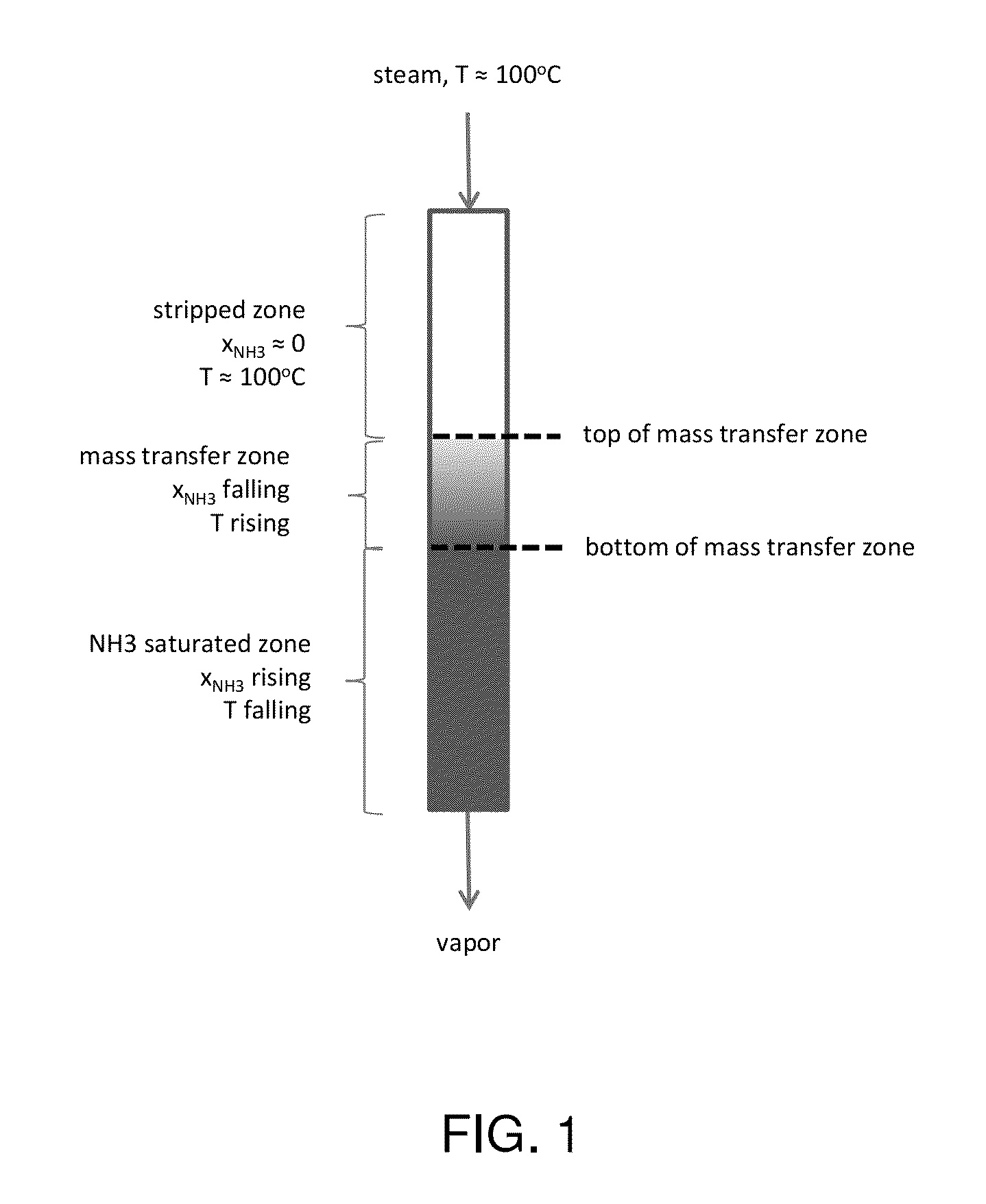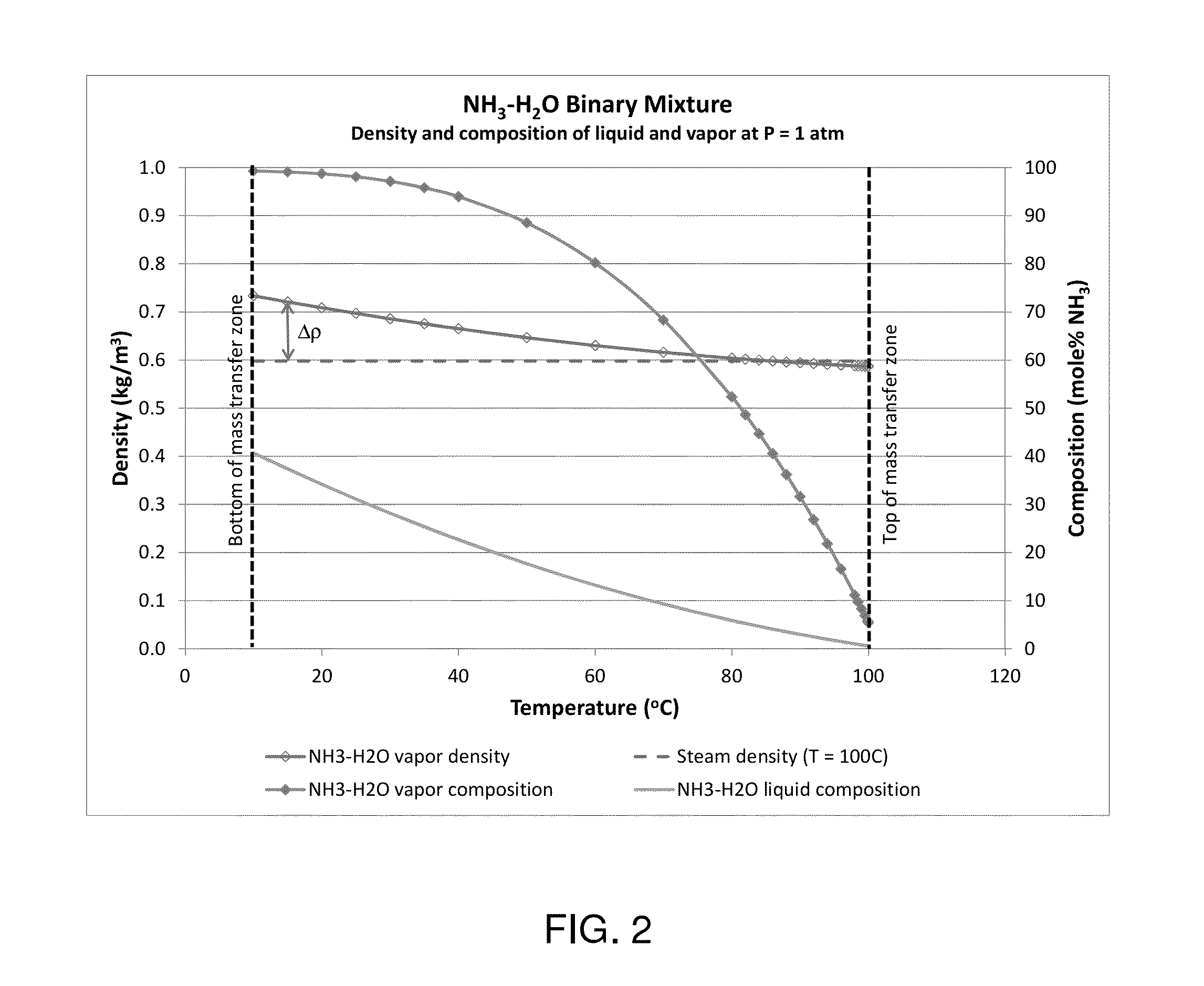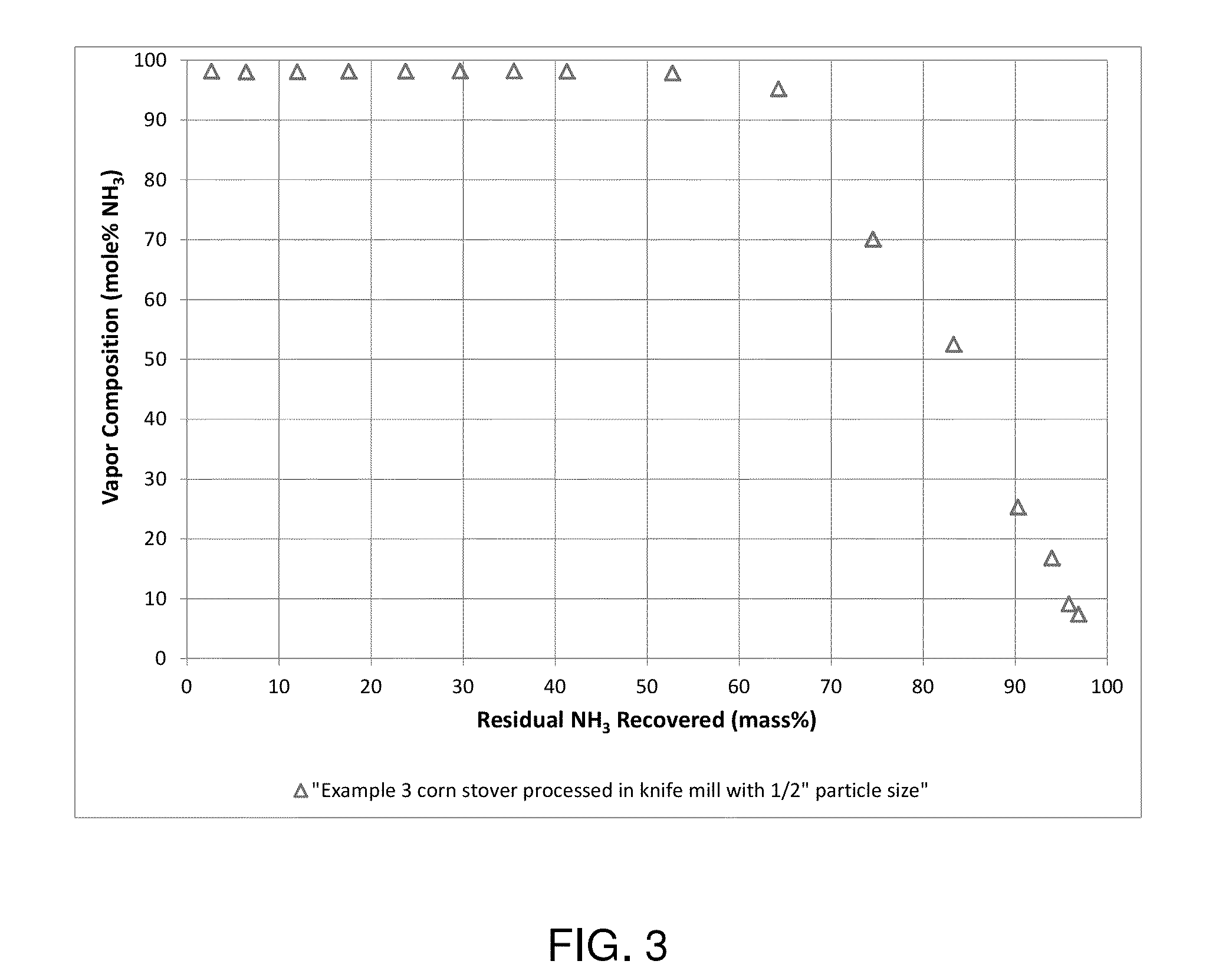Process for treating biomass
a biomass and swelling agent technology, applied in the field of biomass treatment, can solve the problems of less than desirable recovery of various swelling agents used in those processes, high inefficiency, etc., and achieve the effect of increasing enzyme digestibility and easy digestion
- Summary
- Abstract
- Description
- Claims
- Application Information
AI Technical Summary
Benefits of technology
Problems solved by technology
Method used
Image
Examples
examples 1-8
General Experimental
[0079]A series of experiments was carried out in which biomass was milled, screened and packed into six identical cylindrical containers, each 9.7 centimeters in diameter and 15 centimeters long. The containers were constructed with end plates made of perforated sheet with 41% open area to allow axial flow of vapor in and out of each container, and the biomass was compressed into the containers. The six containers were assembled into a vertical stainless steel tubular bed vessel 10.2 centimeters outer diameter and 125 centimeters long, with the end of each container in contact with the adjacent containers, forming a segmented porous bed 9.7 centimeters in diameter and 90 centimeters long.
[0080]The bed was pre-steamed by introducing steam at a mass flow rate of 1 gram per second into the top of the tube and allowing steam and displaced air to flow vertically downward out the bottom of the bed to vent for approximately ten minutes. The bed was then ammoniated by bl...
PUM
| Property | Measurement | Unit |
|---|---|---|
| bed angle | aaaaa | aaaaa |
| enzyme digestibility | aaaaa | aaaaa |
| pressure | aaaaa | aaaaa |
Abstract
Description
Claims
Application Information
 Login to View More
Login to View More - R&D
- Intellectual Property
- Life Sciences
- Materials
- Tech Scout
- Unparalleled Data Quality
- Higher Quality Content
- 60% Fewer Hallucinations
Browse by: Latest US Patents, China's latest patents, Technical Efficacy Thesaurus, Application Domain, Technology Topic, Popular Technical Reports.
© 2025 PatSnap. All rights reserved.Legal|Privacy policy|Modern Slavery Act Transparency Statement|Sitemap|About US| Contact US: help@patsnap.com



